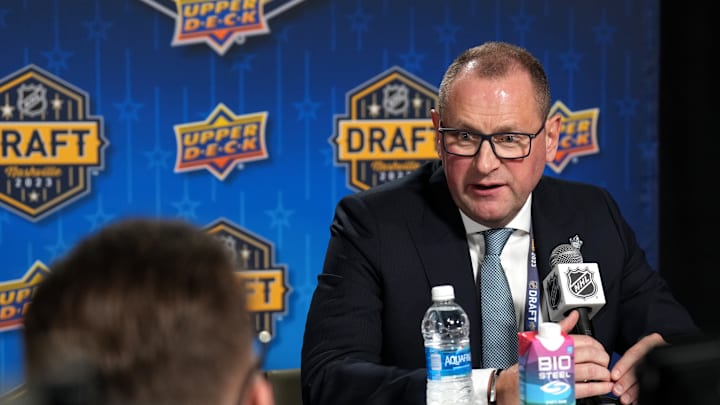Mock Trades
Given these trades I have identified a few possible trade partners.
I only looked at the Leafs trading down and staying in the first round but if the Leafs move down further into the second round, they could potentially get more assets or a better secondary asset.
I have used Puckpedia's Perri Pick Value Calculator tool to try and come up with trades that make sense. Below I used all of the trades that would result in a less than 2.0 +/- value change and keep the Leafs picking in the first round.
The first is with the Montreal Canadiens, where the Leafs swap pick 23 for picks 26 and 57. This would give the Leafs surplus value of +1.7.
The next is the Carolina Hurricanes, swapping the 23rd pick for picks 27 and 60. This would still give the Leafs surplus value at +0.68.
Then there is the Calgary Flames, trading pick 23 for 28 and 62. In this trade, the Leafs would be leaving value on the table and would be much less desirable with -0.15 value change.
The final is the Philadelphia Flyers, Leafs send them the 23rd pick for the 31st and 51st overall pick. This trade trends towards the Leafs receiving even less value with a -0.31 change.
As I mentioned before, there are many factors involved in trading down picks. The first is if the team is willing to move up which depends on their internal scouting rankings and who is still on the board. Then there is the team’s prospect and pick situation and their internal philosophy on trading up/trading down. Then of course the value added/subtracted is always a calculation.
All Trade Information Via: Capfriendly.com and PuckPedia.com
Trades are difficult to make but Treliving will need to make some in order to replenish the team’s prospect cupboard for the future. Many teams have had their windows slammed shut because they cannot keep up with adding NHL-level prospects to their system and incorporating them into their lineup. Doing this will be paramount for the Leafs success now and going forward.
